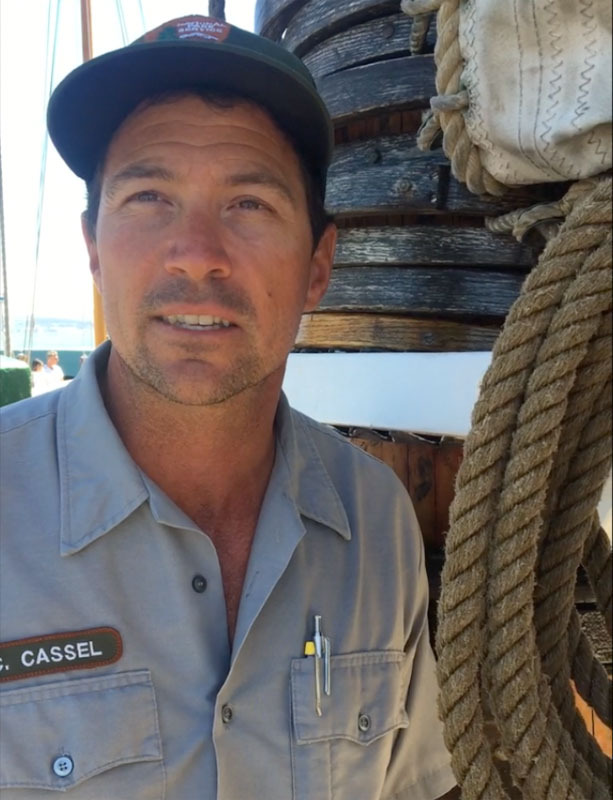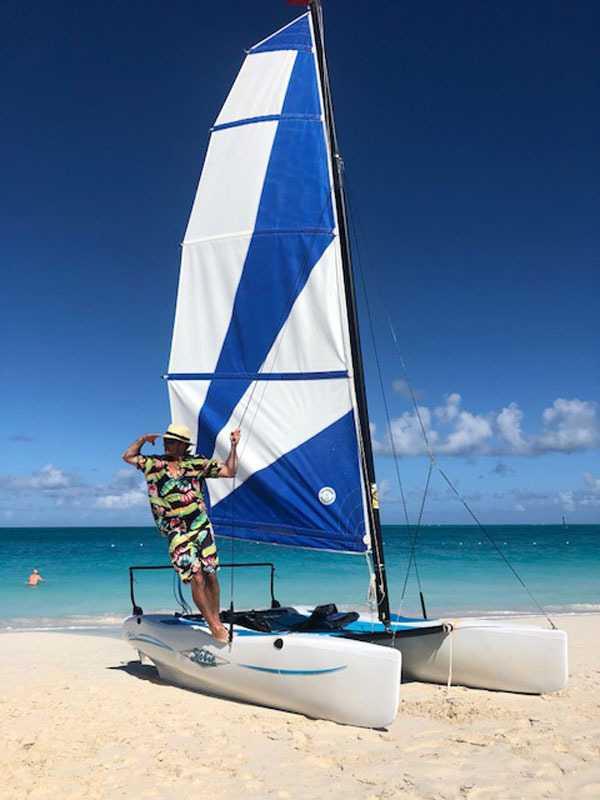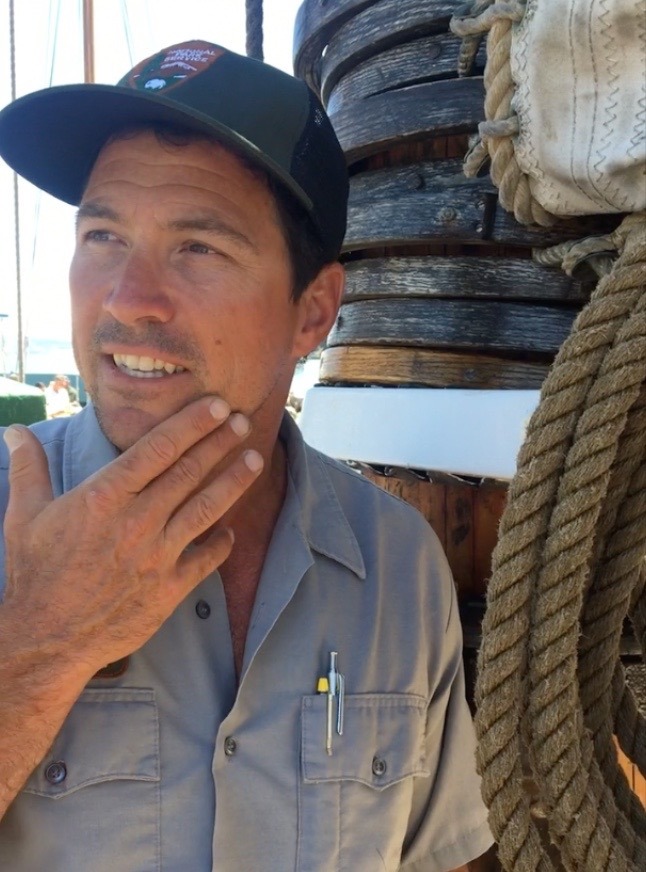
Extended Interview: Carter Cassel
We first met Carter Cassel — the skipper of San Francisco’s National Historic Landmark ship Alma — at Summer Sailstice last June. We’d heard that Cassel comes from a serious sailing family. Curious, we met up with him last month at the San Francisco Maritime Museum, and wrote about him in the March issue’s Sightings.
There’s far more to Carter Cassel than 750 words allow, so we’re bringing you an extended interview. Plus, Cassel asked if we could mention two of his biggest influences, saying he wanted to give credit where credit is due. "Ian McIntyre and Alan Olsen, both legends in the schooner trade and local heroes, were extremely influential in my early career and gave me my big breaks, or rather, gave me the chance to sink or sail."

©2018Latitude 38 Media, LLC
Cassel said that after considering a ‘fast track mariner career’, he committed to working on traditionally rigged vessels. "And when it’s all said and done, I feel pretty fortunate. I’m still doing what I learned how to do when I was a kid. A lot of my peers, they’re not because in this industry, the money in the sail-training and traditional-rig world isn’t what it could be, but you still need the same license as the commercial guys. And everybody ends up finding something else to do when they want to raise a family. I was the same way. I followed my predecessor, Ian McIntyre, who taught me about traditional-rigged vessels and operating square-rig vessels. He used to run the Hawaiian Chieftain.
"Long before the Chieftain was run by [Grays Harbor Historical Seaport], it was Ian’s brainchild to do these education programs. It was a way he could keep running, and keep the boat busy in the off season. He turned it into a pretty amazing program that we actually mirror on Alma as well, and some other programs like Call of the Sea also templated their programs off of what Ian started."

"But I mention him because of any of the sailors I know, Ian should deserve to be doing this thing. But he’s in the building trades now; he’s got a family, and I actually resigned to do the same thing after working on commercial ship-assist tugs in the Bay. I swallowed the anchor, went into the building trades, and started swinging a hammer for my same mentor, Ian. What a shocker it was to be at the bottom of the barrel again, in order to be home to my family at night."
Carter likened working construction to working on a boat, where sailors must be a jack of all trades. He said that he eventually had the "fortunate opportunity to help build the Oracle cats at pier 80 . . . which I quit in order to land this dream job [as captain of Alma], which I had to compete for and win twice; but that’s a whole other story."
As we reported in Sightings, Cassel said that thousands of kids come aboard Alma every year. "And all it takes is one of those children to grow up to do something that’s significant and then give back to funding and the longevity of a boat like this. An outfit that does that really well is the Sea Education Association [SEA]. They take college-level students that don’t have to have any sailing experience and put them on a boat. It’s just a semester program; it used to be heavily marine-science based, so you’d basically be proving a science thesis while you were out at sea — but it’s changed since then."

©Latitude 38 Media, LLC
"These guys have never been on a boat, and they’re having this profound experience. Some of them might keep sailing, some of them might not, but all of them become successful in their lives and they always give back to the program, so it really has a tremendous kind of endowment in that way. That, to me is a good sign of how inspiring being on a boat like this can be [we were standing on the deck of Alma at dusk on a gorgeous February day]. I’ve always been proud of harboring this sailing knowledge, working these older vessels, and the skills it takes to get Alma upwind or downwind, you know? It’s something I take pride in, having these skills and knowledge."
Were you ever part of a sail training program? Do you know someone who was, and who sings its praises? We’d like to know.
